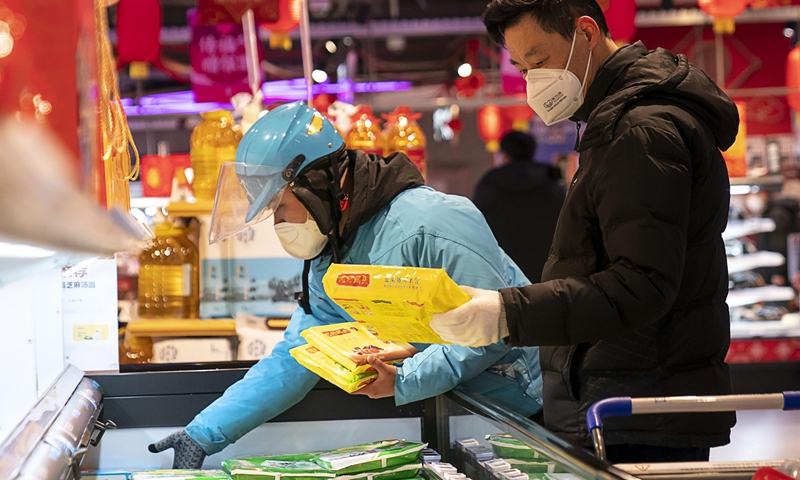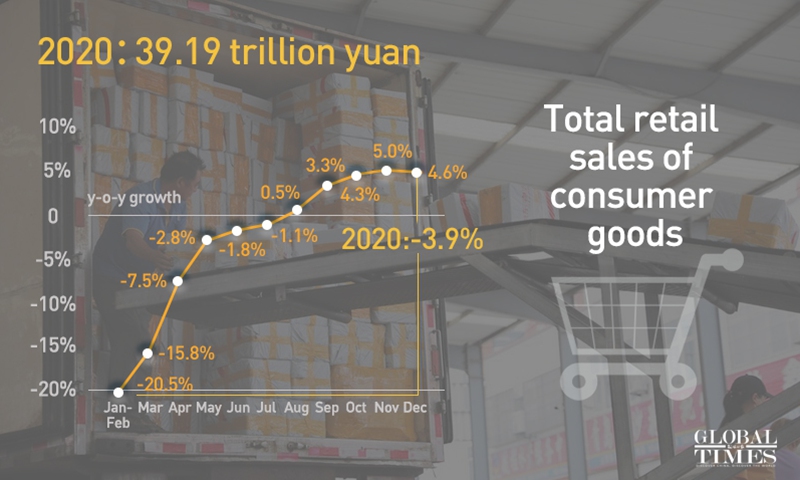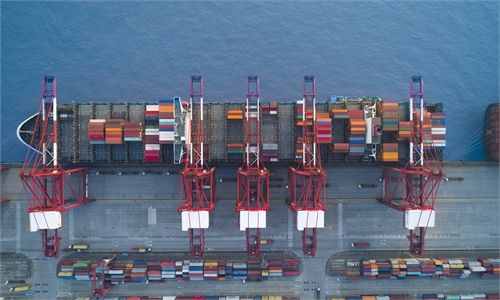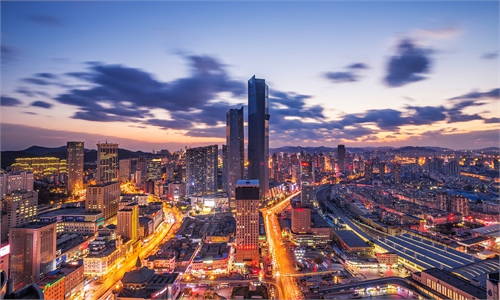China's retail sales dip 3.9% in 2020 amid pandemic; positive growth expected in 2021

A deliveryman collects frozen food at a store of Hema Fresh in Wuhan, capital of central China's Hubei Province, Jan. 27, 2020. (Xinhua/Xiong Qi)
China's retail sales, a reflection of nation-wide consumption, dropped 3.9 percent year-on-year to 39.20 trillion yuan ($6.05) in 2020 as a result of the prolonged coronavirus outbreak. However, it is projected that this figure will return to positive territory in 2021, with double-digit growth even a possibility if large-scale vaccination campaigns can be realized.
Due to strict lockdowns in early 2020, the country's catering industry is one industry that suffered the most from the outbreak. Restaurants' revenues plunged 16.6 percent year-on-year to 3.95 trillion yuan last year, data from the National Bureau of Statistics (NBS) showed on Monday.
In comparison, commercial goods retail dipped 2.3 percent year-on-year to 35.25 trillion yuan, with sales of products for consumption posting faster growth, according to the NBS.
The sales of telecommunications equipment, cosmetics and jewelry at large enterprises rose 26.0 percent, 21.2 percent and 17.3 percent, respectively, Ning Jizhe, head of the NBS, said at a press briefing on Monday.

Total retail sales of consumer goods Infographic: GT
With consumers tending to purchase products online to avoid going outside, the country's online sales soared 10.9 percent year-on-year in 2020 to 11.76 trillion yuan. The online sales of physical products rose 14.8 percent year-on-year to 9.76 trillion yuan, accounting for 24.9 percent of total retail sales nationwide, 4.2 percentage points higher than the previous year.With a steady economic recovery, the driving force of consumption gradually strengthened last year, Ning said. In the fourth quarter of last year, retail sales increased 4.6 percent year-on-year, 3.7 percentage points higher than the previous quarter.
In December alone, the country's retail sales grew 4.6 percent year-on-year, up 1.24 percent month-on-month.
Compared with developed economies, where consumption contributes about 70-80 percent to their total GDP, the fundamental role of consumption in driving up economic growth in China has great room for expansion, Ning said.
The establishment of a "dual circulation" development strategy requires realizing the potential of the huge domestic market while gradually expanding the country's opening-up, Ning said, noting that residents' consumption power should be raised and explored more for consumption growth to be achieved.
"In order to realize the domestic market's consumption potential, prudent monetary policies should remain this year to enable small- and medium-sized enterprises to have access to ample funds, as they create about 90 percent of jobs in the country," said Yu Miaojie, deputy dean with the National School of Development at Peking University, noting that taxation and fee cuts are also necessary to increase people's disposable incomes.
Dong Dengxin, director of the Finance and Securities Institute at the Wuhan University of Science and Technology, told the Global Times on Monday that much uncertainty still exists for the country's consumption sector in 2021 because of sporadic resurgences in some regions across the country and the severe outbreak situation overseas.
The impact of sporadic infections on the economy is controllable, Ning said. With experience accumulated in fighting COVID-19, local governments are taking swift and precise measures to counter resurgences. Most regions' economic and social activities have remained normal, he said.
Dong forecast that the country's retail sales may return to positive territory this year, with single-digit and even double-digit growth possible if consumers' confidence is fully boosted by nationwide large-scale vaccination campaigns.
Global Times



